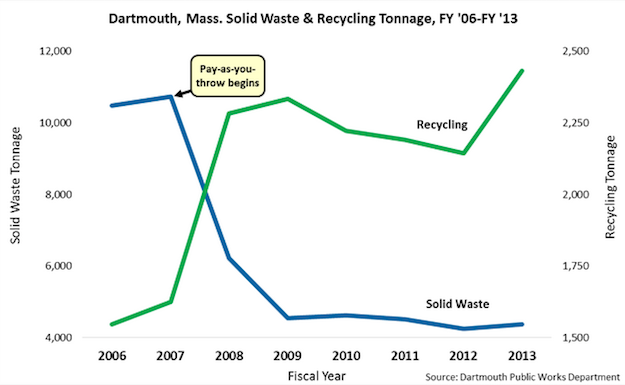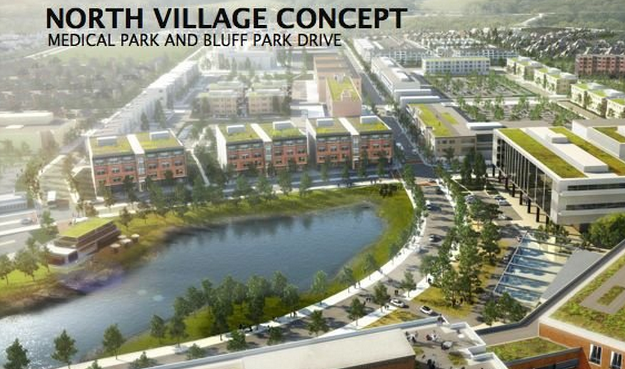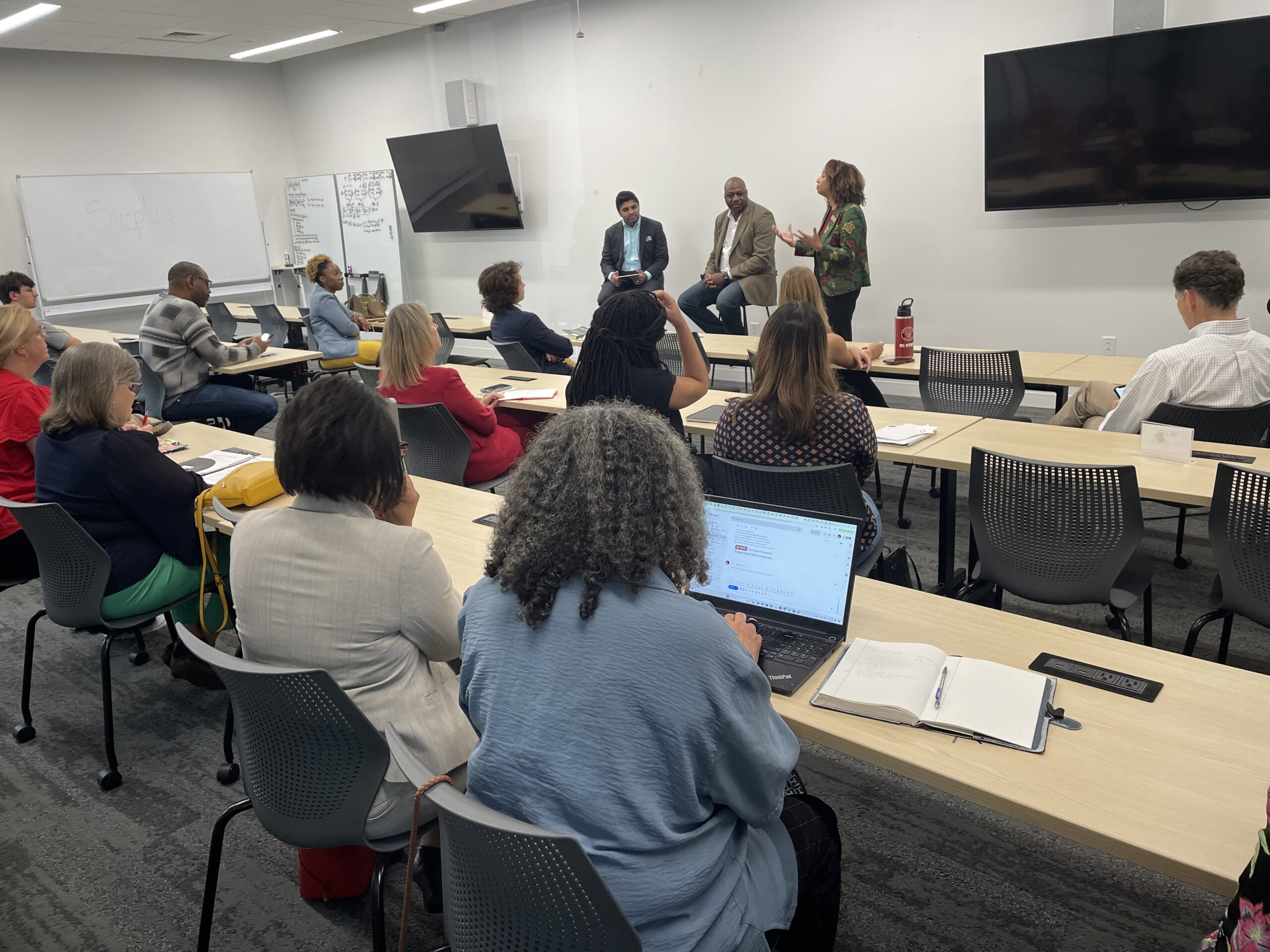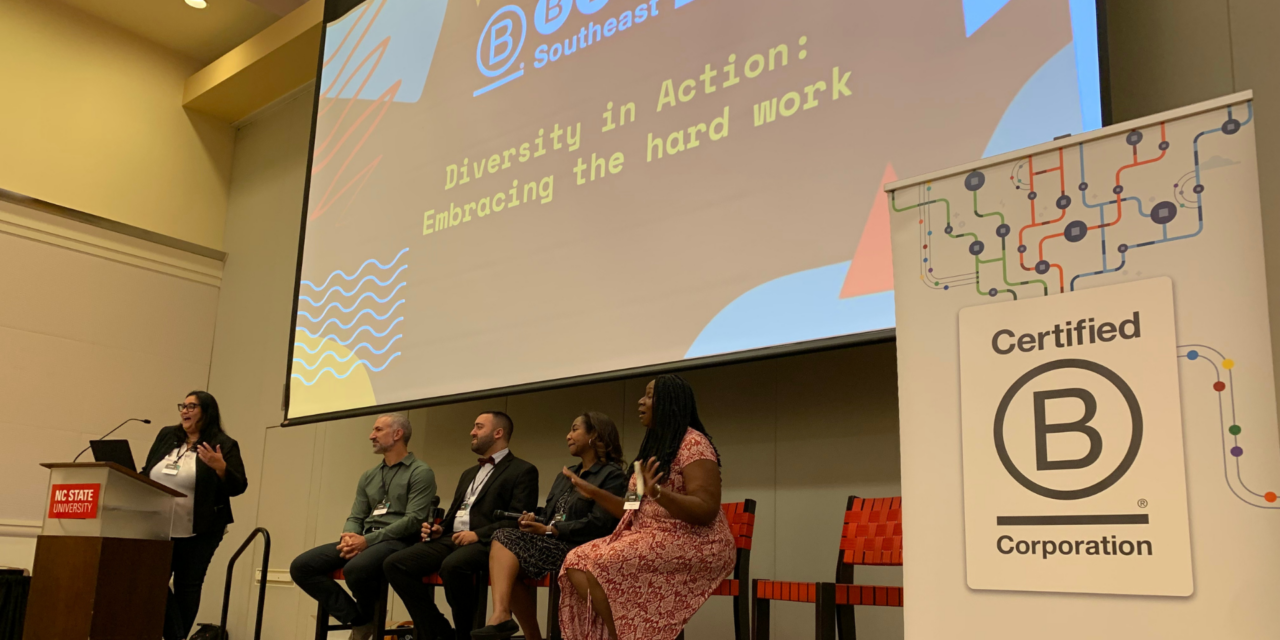BUILDING SMART CITIES IN NC AND BEYOND

Despite major advances in cutting edge technology, the Smart Cities panel suggested basic infrastructure like bike routes are qually important. Photo: JoelInSouthernCA/creative commons
With RTP positioning itself as a Cor Rademaker, President, STRATEQ
- John Marriott, VP, OSIsoft LLC
- , which greatly improves air quality in port cities, through wireless electric bus charging, to Raleigh-based WasteZero’s trash metering solutions, which have delivered dramatic reductions in landfill waste in municipalities around the country (see chart below), it was clear that technology has a huge role to play in reducing emissions and improving city budgets.

Fancy new technology, however, can be a distraction too. As Cor Rademaker, President of smart solutions provider STRATEQ noted, one of the key reasons why leading smart cities like Amsterdam and Copenhagen have performed so well in terms of livability and sustainability has been a decidedly 19th Century technology – the bicycle. In Copenhagen, Rademaker noted, about half of the journeys taken every day are by bike. And many more are taken by public transit or walking. A short video about Amsterdam’s bicycle-centric urban planning is a classic example of both how bikes can improve cities, and also how previously car-centric systems can change over time.
Bicycle Anecdotes from Amsterdam from Streetfilms on Vimeo.
Where Smart Cities come into their own, then, is not in using flashy technology to meet every need, but rather in using data to inform planning, and then to apply appropriate solutions to encourage more sustainable behavior. Often those solutions are elegantly simple – whether that’s LED streetlights in Barcelona which dim when nobody is around, or intersections that are designed to keep cyclists safe.
Looking at specific examples of how Smart Cities might develop, Thomas D’Alesandro of Blakefield shared his company’s plans for Chatham Park, a major new mixed use development planned for the banks of the Haw River near Pittsboro. While some in the audience shared concerns over the environmental impact of the plans, D’Alesandro argued that old growth forests will be rigorously protected, that the new developments will include up to 35% open space, and that there will be hundreds of miles of bike trails and walking to promote car-free transportation.

With so many clean tech companies converging on the Triangle, the region’s position as a smart tech cluster seems assured. What will be interesting, however, will be to see whether communities in the Triangle, and elsewhere in NC, can take advantage of these resources not just to sell technology , but rather to create smarter, more livable cities with walkable neighborhoods, more efficient buildings, and functioning transportation infrastructure that puts people first, not cars.
With news just out that the Chapel Hill-Durham Light Rail project has federal approval to move forward, there are promising signs that we can do just that.
But we have a long way to go.
- Categories:


